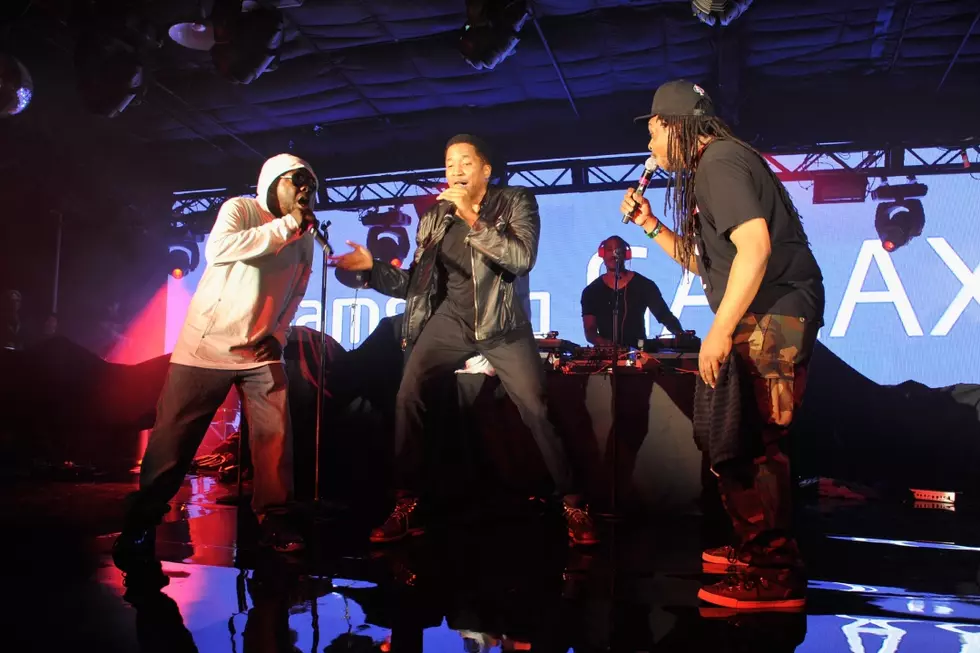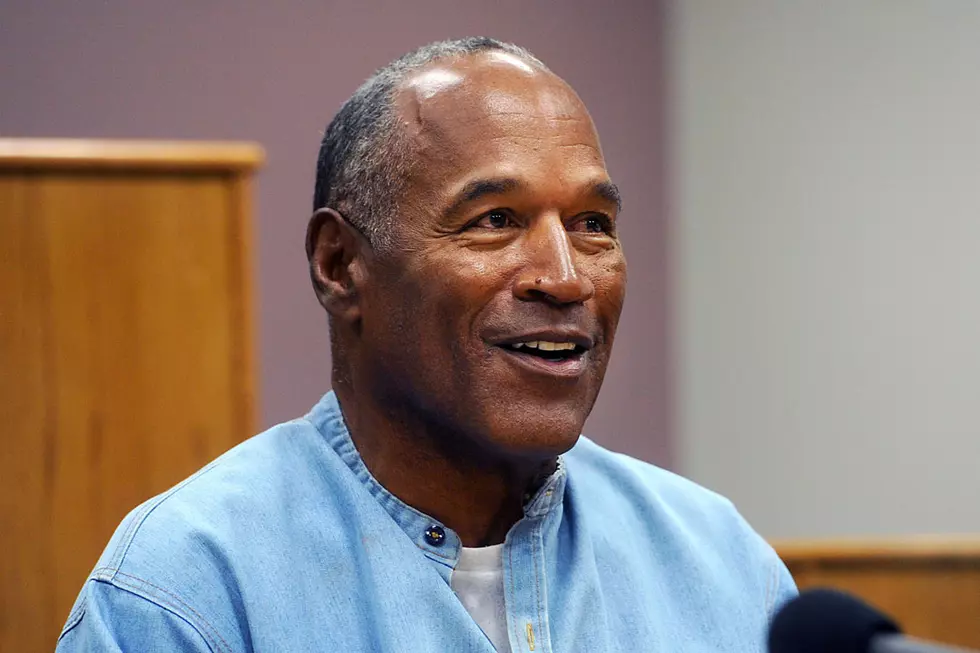A Look Back at Classics by Ice Cube, Geto Boys & A Tribe Called Quest
Over the weekend, Yo! MTV Raps, one of the most beloved shows in hip-hop history, made a comeback. The newly christened, Yo! MTV Raps Presents: Classic Cuts debuted early Monday morning (December 5), bringing behind the scenes stories from three of the most popular videos to air on MTV during the trailblazing Yo! era—A Tribe Called Quest’s “Scenario,” the Geto Boys’ ‘Mind Playing Tricks on Me” and Ice Cube’s “It Was A Good Day." With only a 30-minute run time, it was impossible for MTV2 to tell the entire story teach video. So here at XXL, we have the extra scoop of what you may still not know.
A Look Back at Ice Cube’s “It Was A Good Day”
Back in 1992 when Ice Cube first recorded “It Was Good Day,” his hometown of LA was in utter chaos but the legendary rapper was having a great year. In fact, Cube had strung together a few phenomenal years. The scowling West Coast icon was arguably the King at the time. Along with Chuck D, Cube definitely provided the genre with its most provocative and controversial voice and was attaining platinum plaques, endless street credibility and critical accolades. Hollywood had also become his playground with his historic film role “Boyz In The Hood.”
He wrote the record in his hotel room in the summer of 1992 while being in a state of “euphoria” over his success.
Cube became a Godfather of gangsta rap when—as part of N.W.A.—he released the classic, trailblazing, game changing LP, Straight Outta Compton in 1988. Just two years later he had left the group over financial gripes and became a super power as a solo MC. Cube’s 1990 LP, Amerikkka’s Most Wanted became a instant classic and in 1991, he followed with a disc that many consider to be one of hip-hop's greatest albums of all-time, Death Certificate. Both projects gave searing social commentary that Cube delivered with aggression and thought provoking articulation.
“It Was A Good Day”—the second single off of Cube’s 1993 LP, The Predator, was such a pivotal track, not just in the era that it was released, but still to this day because it illustrated that no matter what chaotic environment you come from, there is always going to be some light. Yes, Cube showed a brighter side, but he also delivered heavy social commentary simultaneously.
The video was also a launching pad for filmmaker F. Gary Gray who has gone onto to direct Hollywood features such as The Negotiator, The Italian Job, and Law Abiding Citizen.
“It Was A Good Day” was filmed in downtown and midtown South Central LA as well as some areas of Baldwin Hills and the infamous Rolling 60s Crips neighborhood. The production was a total run and gun shoot, no permits were used and everyone had to very cognizant of not just the police, but of car jackers and gangbangers who might not have taken kindly to their hoods being captured on film. The video came almost a year after the LA Riots and was filmed at the height of gang violence in LA. Just because Cube rapped about decreased violence, didn’t mean that happened in real life. Speaking of real life, Cube’s house in the video, was actually owned and lived in by the MC at the time.
Gray says the line that inspired him the most to direct the video was “today I didn’t even have to use my my AK./ I’d have to say it was good day.” It was his third production with Cube (W.C. And The Mad Circle’s “Dress Code” and Cube’s “True To The Game” were his first two) and early ideas for the film Friday were talked about on the set. After receiving a cassette of the song in the mail prior to Predator’s release, Gray wrote the concept overnight.
The video’s kitchen scene was shot in Ice Cube’s actual South Central home. Cube took pride that he kept a home in the hood while his friends-turned-enemies at the time, N.W.A. had moved out.
Real Crips and Bloods were used in the video as a way to promote a gang truce. The green low rider in the video belonged to one of F. Gary Gray’s friends and while shooting the scenes at night, the production had to be leery of car jackers. The scene at the end of the video where the police surrounded Cube was paid for by Gary Gray himself. The money in the budget that was slotted to pay his salary, was invested into the video for the closing sequence by the director.
“Cube was like fuck that, I had a good day,” Gray explains Cube turning his back on the police in the video in the finale. “I’m not gonna succumb to your bullshit. You can surround the house or whatever. I’m out. I’m going inside. I’m gonna continue my good day. I’m not tripping off of your bullshit. You have to remember the context of the time. There was a big war between the streets and the LAPD at the time. He was sending a message that ‘I’m my own man. I didn’t do shit. I’m a innocent man having a good day… I’m not gonna surrender.”
Cube’s next video, “Check Yourself” starts where “It Was A Good Day” ended. The police apprehend Cube and took him to prison.
“It Was A Good Day” became a number one record for Cube on Billboard’s Hot Rap Singles charts and a top ten hit on Billboard’s Hot 100. The record also sold over 500,000 copies in its initial run and the line in the song where Cube says “messed around and hit a triple double” has become a staple catchphrase for sports anchors on ESPN over the years and is still heavily used. “It Was A Good Day” has grown to be universally considered to be one of rap’s greatest narrative songs, but it also made onto such acclaimed lists as XXL’s “Top 250 Songs of the 90s” and VH1’s “Greatest Rap Songs.” Yaah yay!
A Look Back at the Geto Boys’ “Mind Playing Tricks On Me.”
The deranged, genius mind of Brad “Scarface” Jordan has made him one of the most revered, irrefutable hip-hop legends to ever get in a vocal booth. Back in 1990, a then 20 year-old Scarface was sitting in his grandmother’s living room watching television when he heard her say a phrase she would often exclaim around the house, “My mind’s playing tricks on me.”
“It was strange way how it came about,” remembers 'Face’s 83 year-old grandmother Rosemary Wilson, AKA “Maw Maw.” “He said I was walking in the house with my lips moving. He was down on the floor looking at TV. He said ‘maw maw, what you doing? What you saying?’ I said ‘oh nothing baby, my mind’s playing tricks on me.’”
An inspired 'Face—who was working on his debut solo LP at the time, Mr. Scarface is Back—began penning “Mind Playing Tricks On Me” about being overwhelmed by paranoia. When coming up with the beat for the record, 'Face sat in the studio with his personal “button pusher,” engineer Doug King. 'Face and King sampled Isaac Hayes and the off-beat kick drums on the song were Face’s take on what super producer Marley Marl had done on classic records for artists such as Big Daddy Kane and Biz Markie.
Excited about his record, 'Face took the original version of “Mind Playing Tricks On Me” to Rap-A-Lot records’ CEO J. Prince. Prince, one of the godfathers of the independent rap hustle, and other members in the Rap-A-Lot camp told Scarface they didn’t care for the song. “Minds Playing Tricks On Me” was almost scrapped. Months later, as 'Face continued to work on his solo debut, he heard the new version of “Minds Playing Tricks on Me.” It featured a verse from Willie D as well as Bushwick Bill, who he had met just a year prior when they began to record the Geto Boys album, Grip It! On That Other Level. While Willie authored his own rhymes, Bushwick recited raps that 'Face had previously recorded on the song. The record would turn out to be not just the lead cut from the Geto Boys’ 1991 LP, We Can’t Be Stopped, it became their signature song.
“I didn’t have any idea he was gonna try and make a song out of it,” Ms. Wilson says. “When I
heard it, I couldn’t believe it. It was hitting the charts man. When I heard it, at first it was some words on the songs I didn’t want to hear. I said, ‘Are those words coming out of your mouth?’ He said ‘Grandma, that’s what you have to do if you want to get your foot in the door.’”
When the Geto Boys shot the video for “Minds Playing…” 'Face was adamant that there’d be “no lip syncing performances” simply because in his own words, he felt that it was “corny.” This is a M.O. Face has kept for most of his career, he hates to perform in videos and would prefer to tell a story. The video was shot in three days in Houston’s Fifth Ward and the only the time all three members of the group were on set together was the one shot where they pummel an adversary that turned out to be a figment of Bushwick’s imagination. The trio actually never spent any time together outside of music business and didn’t get along too well, especially 'Face and Bushwick. Will and 'Face did however rally around Bushwick when he was shot in the eye by his girlfriend shortly before We Can’t Be Stopped was released. A photo of all three in the hospital served as the album’s cover.
A high profile ad campaign for St. Ides liquor (the company always picked only the elite MCs of the era such as Tupac, Notorious B.I.G., Wu-Tang Clan and Ice Cube), movie roles and an iconic cover of The Source followed, as did mainstream appearances on MTV, The Arsenio Hall show and CNN. “Mind Playing Tricks On Me” was definitely one of the most rotated and popular videos in YO! MTV Raps history as well as other outlets such as The Box, Pump It Up and Video Music Box.
Geto Boys went on tour during the height of “Mind’s Playing Tricks on Me” and after the run, Willie D left the group. The impact of the song is immeasurable, not just for the Geto Boys and Rap-A-Lot, but for Southern hip-hop. Circa 1991 was dominated by acts from the West such as Ice Cube, Tupac and N.W.A. as well as East Coast MCs such as A Tribe Called Quest, EPMD and LL Cool. Meanwhile, Southerners like Master P and the Geto Boys struggled to be heard on a national level. With a mainstream hit, the Geto Boys were able to travel to areas such as New York City where they had gotten booed off the stage just a year prior and plant the flag for rap down bottom. Seminal groups such as 8Ball and MJG, UGK and Outkast soon followed just a few short years later.
A Look Back at A Tribe Called Quest’s “Scenario”
In the spring of 1991, two of the biggest groups in hip-hop at the time, A Tribe Called Quest and Leaders of the New School, were sequestered in New York City’s Battery Studios. The bond between Tribe and Leaders had been tight since the late 1980s when they met at a concert, but on this night, the tension in the room was heavy. All MCs in both respective groups (including Tribe’s often forgotten quiet member Jarobi) were in separate corners, heads down, pen on paper, oblivious to everything and everyone except for the beat that played continuously on loop in the room. The thump of the track that would eventually become the soundscape for “Scenario” was so thunderous that it only fueled the competitive spirit among the artists.
By the end of the night, everyone had written verses and laid vocals but it wouldn’t be the end of that song. “Scenario” was undoubtedly a hit in the making that Tribe had in their chamber for their career-turning effort, The Low End Theory. However, as Tribe continued to record the rest of the LP, word of mouth about “Scenario” began to circulate to their peers, and Tribe’s friends wanted in on the track, but Tip decided to go with plan A. That summer, Tribe and Leaders went back in the lab and revised their verses.
This time Tip had an epiphany. Busta Rhymes’ new verse was so ferocious, that Tip felt Bus needed his own intro the song. So he penned a few bars for Busta to recite before Tip would come back in and throw an alley to his homie; “I heard you rushed and rush then attack…” the exchange became legendary. It was no denying that Busta should close the song.
“Scenario,” Low End’s third single, immediately became one of the DJs’ favorites to spin in clubs and in the radio and the group’s label, Jive, were anxious to invest big bucks into a video. There was however, heavy apprehension within Tribe to go with the label’s decision of choosing director Jim Swaffield to helm the project because he had little experience working with rappers. Tribe remained extremely nervous about working with Swaffield all the way up until they saw the final version of the video. No one understood the green screen or the director’s special effects vision.
You could never tell by watching the video. The set, which was in New York City, was extremely jovial and filled with high energy from rhyme ciphers on the side to the majority of men making advances to the model in the video who has the highlighted costume change during Dinco D’s verse. In the end, the consensus was that that Q-Tip would win over her affections. Although you only see guests such Spike Lee, Fab Five Freddy, De La Soul and Redman in the actual video, plenty more hip-hop luminaries came down to support Tribe.
Ironically, although the video and song would eventually turn into a catapulting vehicle for Leaders' Busta Rhymes, many on the set felt that Charlie Brown had just as big as presence as Bus and kept regaling about Brown’s performance in the video and his signature “Broooowwwwwwn” line on the record. Leaders broke up shortly after the track's release and Bus lived off guest appearances for three years before dropping his solo LP.
Low End Theory was released on September, 24 1991 and instantly became dubbed a classic. It’s grown to be an uber-classic over the past two decades and has been dubbed one of the greatest musical accomplishments ever by the likes of magazines such as Rolling Stone and Spin. The opus transformed Tribe’s image from oddball hip-hop flower children to universally embraced rap world icons.
“’91, that was a good time in hip-hop,” Tip told MTV News in 1998. “ That’s when we really saw hip-hop’s promise. There was a lot of good stuff going on artistically, ‘89 to like’ 92. It was that time when hip-hop really blossomed. You had N.W.A., putting their joint out. Ice Cube put out Amerikkka’s Most Wanted. P.E. put out their joint. You had Digital Underground, the Geto Boys. When we came out with our piece, everybody was listening to each other. I remember seeing Dr. Dre’s reaction when we was feeling them and they was feeling us…. It really became a phenomenon and we were blessed to be there.” —Shaheem Reid
More From XXL









